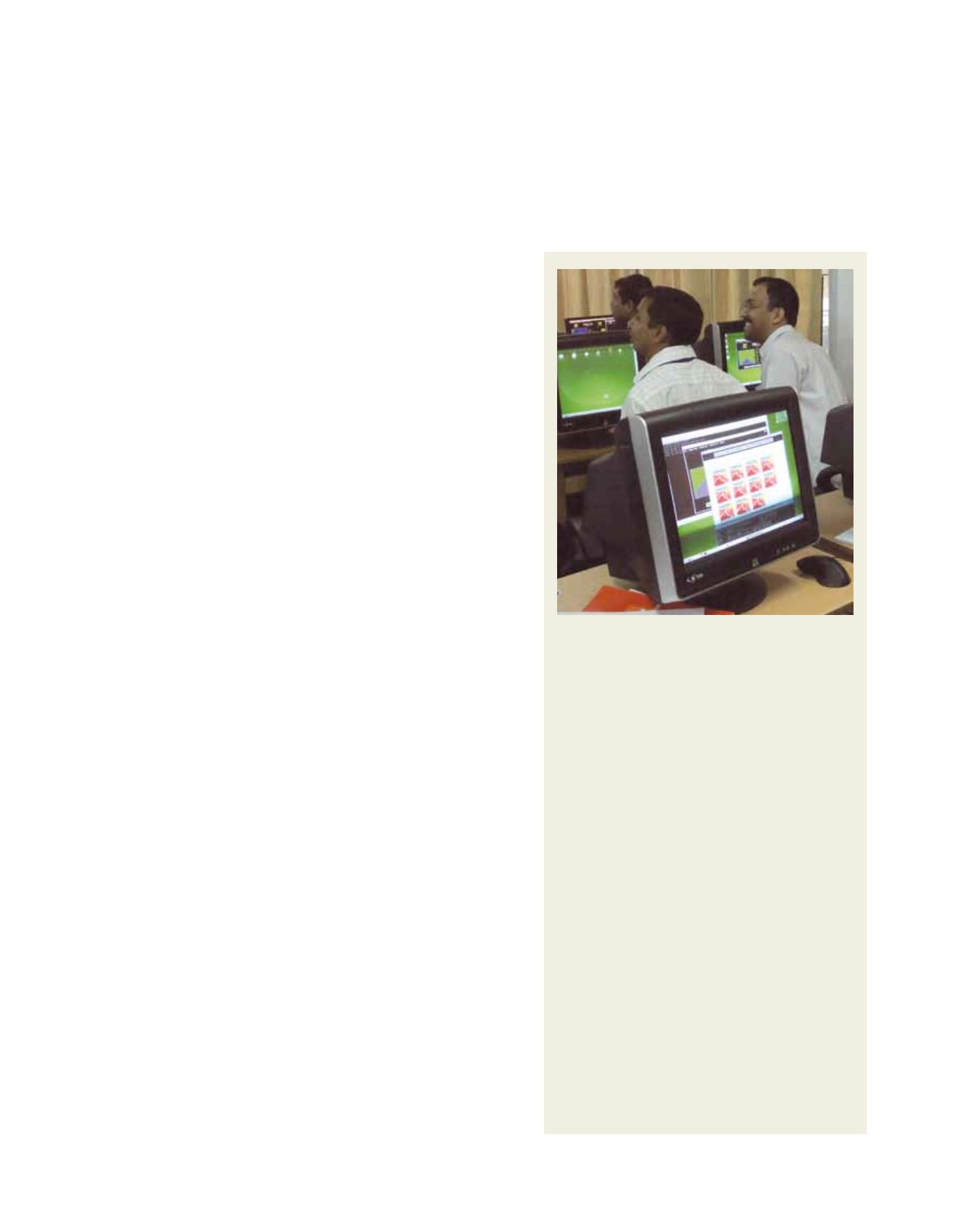

[
] 252
C
apacity
D
evelopment
A range of plausible future climate outcomes were produced by
the Met Office Hadley Centre, using a perturbed physics ensem-
ble approach
2
which involves building a number of global climate
models consistent with current knowledge of how to represent the
climate system. Results from these global climate models were
downscaled using the Met Office’s regional climate modelling
system PRECIS at 25 km resolution. The high resolution PRECIS
data provide a level of detail relevant for exploring many impact and
vulnerability issues.
3
TERI focuses on impact modelling, vulnerability assessment and
case studies, and capacity building. The high-resolution climate
projections from regional climate models provided by the Met Office
have been used for impact modelling in selected sectors, and cross-
sectoral linkages were also investigated.
As climate vulnerability is highly site-specific, TERI will select six
case-study sites to conduct detailed vulnerability assessments and
propose appropriate adaptation strategies. The project is expected to
draw linkages from the case-specific findings to regional/state level
adaptation strategies, addressing the key sectors and leading to a
State Adaptation Action Plan for the Government of Maharashtra.
Advised by both the Met Office and TERI, the Government of
Maharashtra will use results from the climate projections and impact
assessments in its policy and decision-making process to agree
state-wide adaptation techniques. Through stakeholder and partner
workshops, the Met Office will play a key role in ensuring accurate
interpretation of climate projection results.
Research highlights
Maharashtra’s monsoon season is from June to September and the
study focused solely on these months as they account for roughly
70-80 per cent of the region’s rainfall. It’s a highly important season
for agricultural productivity and crop yields, water resources, and
the health and wellbeing of Maharashtra’s citizens.
Rising carbon dioxide concentrations mean that globally averaged
temperatures are continuing to increase. For Maharashtra, studies
consistently projected a temperature increase over the entire region
for the monsoon season of between 1 .5° C and 3° C for the four
models used. Such increased temperatures could lead to severe
drought, water scarcity, and reduced crop yield – all of which could
have a devastating impact on people.
In addition to increasing temperatures, we expect climate change
to alter many aspects of global and regional precipitation patterns.
For Maharashtra, all four model projections suggest an increase in
monsoon rainfall, particularly along the state’s coastlines and the
Western Ghats, with only slight decreases in rainfall seen further
inland. Strong rainfall increases, such as those seen along the
Maharashtra coast, could result in extreme flooding – drastically
reducing the state’s agricultural productivity and promoting water-
borne diseases such as cholera.
While the amount of monsoon rainfall is a key factor affecting
future adaptation strategies, any changes in the duration or intensity
of this season could have strong impacts on Maharashtra’s vulner-
ability to future climate change. Although we expect the monsoon
season to remain relatively unchanged, all four models project an
increase in the intensity of monsoon rainfall.
We project that intense rainfall events will extend further into the
final months of the season. While the present day monsoon period
produces maximum rainfall during July, our projections widen this
maximum rainfall period to both July and August. With the heavi-
est monsoon rainfall lasting longer into the monsoon
season, the threat of localized and severe flooding
events is further intensified in a warmer future climate.
Daily extremes
We looked at the projected changes in the frequency
of extreme occurrences in both high temperatures
Training at the Bangladesh University of
Engineering and Technology
A country with limited resources, infrastructure and a
dependence on subsistence agriculture, Bangladesh is also
highly vulnerable to climate change. In fact, recent studies
found that even the most aggressive emissions reduction
policies will still result in two thirds of the expected twenty-
first century sea level increase.
In 2010, the Met Office Hadley Centre ran a project called
‘Capacity Building in Climate Modelling in Bangladesh’
working with UKaid and the Climate Change Cell at the
Bangladesh University of Engineering and Technology
(BUET). It aimed to apply regional climate change models,
interpret their outputs and provide policymakers with the
high quality, high resolution data they need to plan for
climate change.
The project funded a modern, dedicated climate change
computer lab. This was set up within the Institute for Water
and Flood Management at BUET and includes everything
needed to run the Met Office Hadley Centre’s regional
climate modelling system PRECIS and other programs.
The facility also enabled training workshops run by Met
Office Hadley Centre scientists, and other climate change
modelling activities. It will continue to be used for modelling
in the future.
The Met Office Hadley Centre and BUET partnership has
resulted in a range of new initiatives including:
• An online discussion forum for climate modellers in
Bangladesh
• A new website for news and sharing information
• A division of responsibility for conducting the high-
resolution model runs between different institutes in
Bangladesh
• The establishment of monthly meetings of all
Bangladeshi participants to discuss progress, share
results and agree next steps.
Image: Met Office (UK)
















